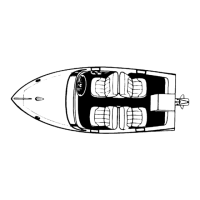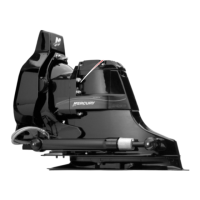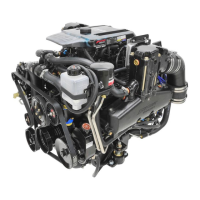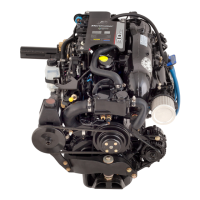
Do you have a question about the Mercury 30E and is the answer not in the manual?
Explains the purpose of the lanyard stop switch and its safety implications for operator and passenger protection.
Advises on protecting people in the water, avoiding waves/wake jumping, and impact with underwater hazards.
Recommends dealer installation or following manual instructions for proper outboard setup and performance.
Guides on positioning the remote-control box and connecting remote control cables for steering and throttle.
Details the importance of using self-locking nuts for steering link rod fasteners to prevent disengagement.
Covers battery mounting, cable connections, and required rating, emphasizing safety during charging.
Lists essential checks before starting, including safety equipment, fuel supply, and operating environment awareness.
Covers operating in freezing or saltwater conditions, at high elevations, and the critical engine break-in procedure.
Details the steps for starting the engine, including choke operation and warm-up recommendations for engine longevity.
Explains forward and reverse gear shifting procedures and how to properly stop the engine.
Provides instructions for starting the engine using a spare starter rope if the primary system fails.
Outlines periodic maintenance tasks required before use, after use, and at 100-hour/yearly intervals.
Addresses potential causes when the starter motor will not crank the engine, such as blown fuses or battery issues.
Lists common reasons for the engine not starting, including switch positions, fuel issues, and ignition failure.
Identifies causes for the engine running erratically, such as fouled spark plugs or incorrect fuel restrictions.












